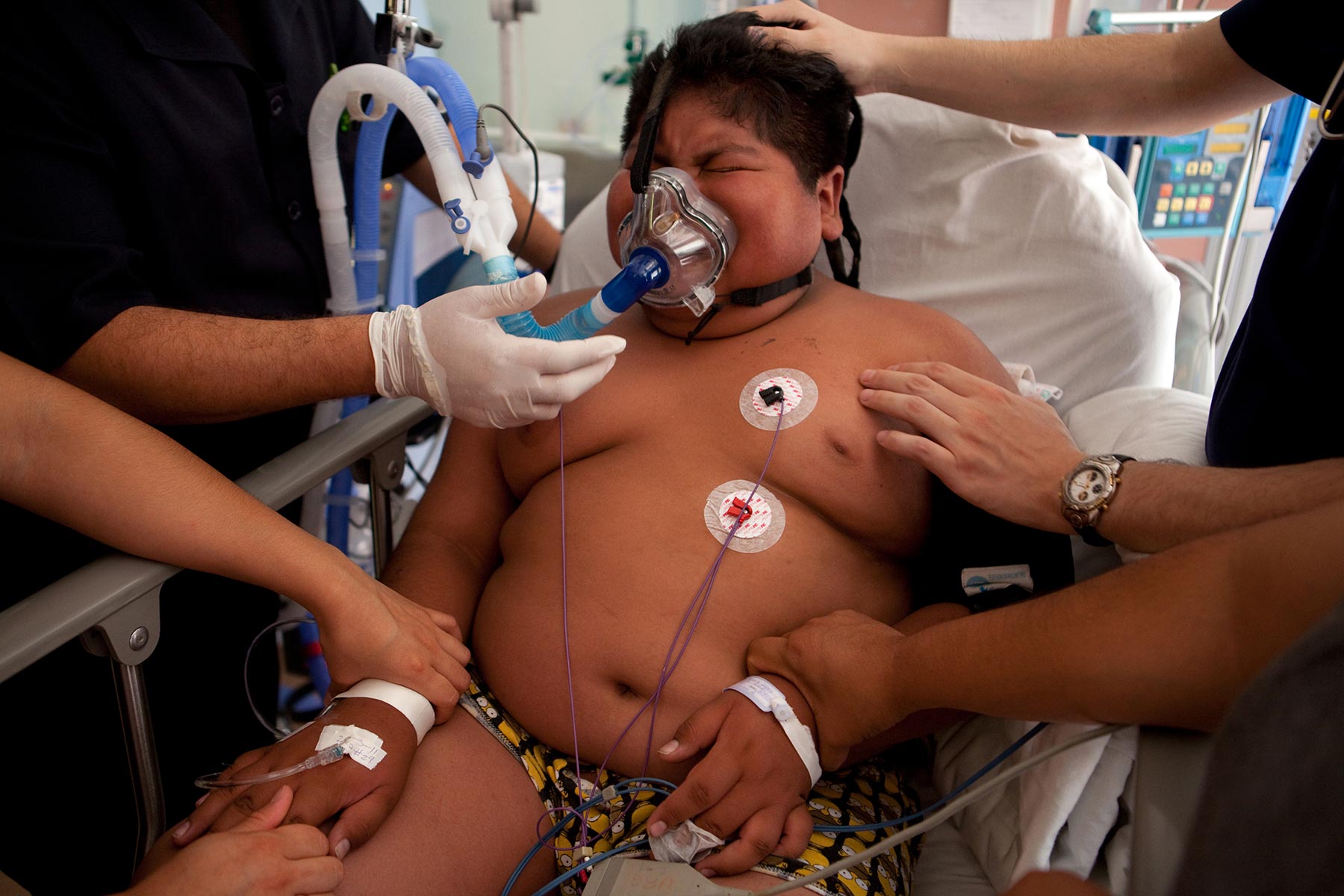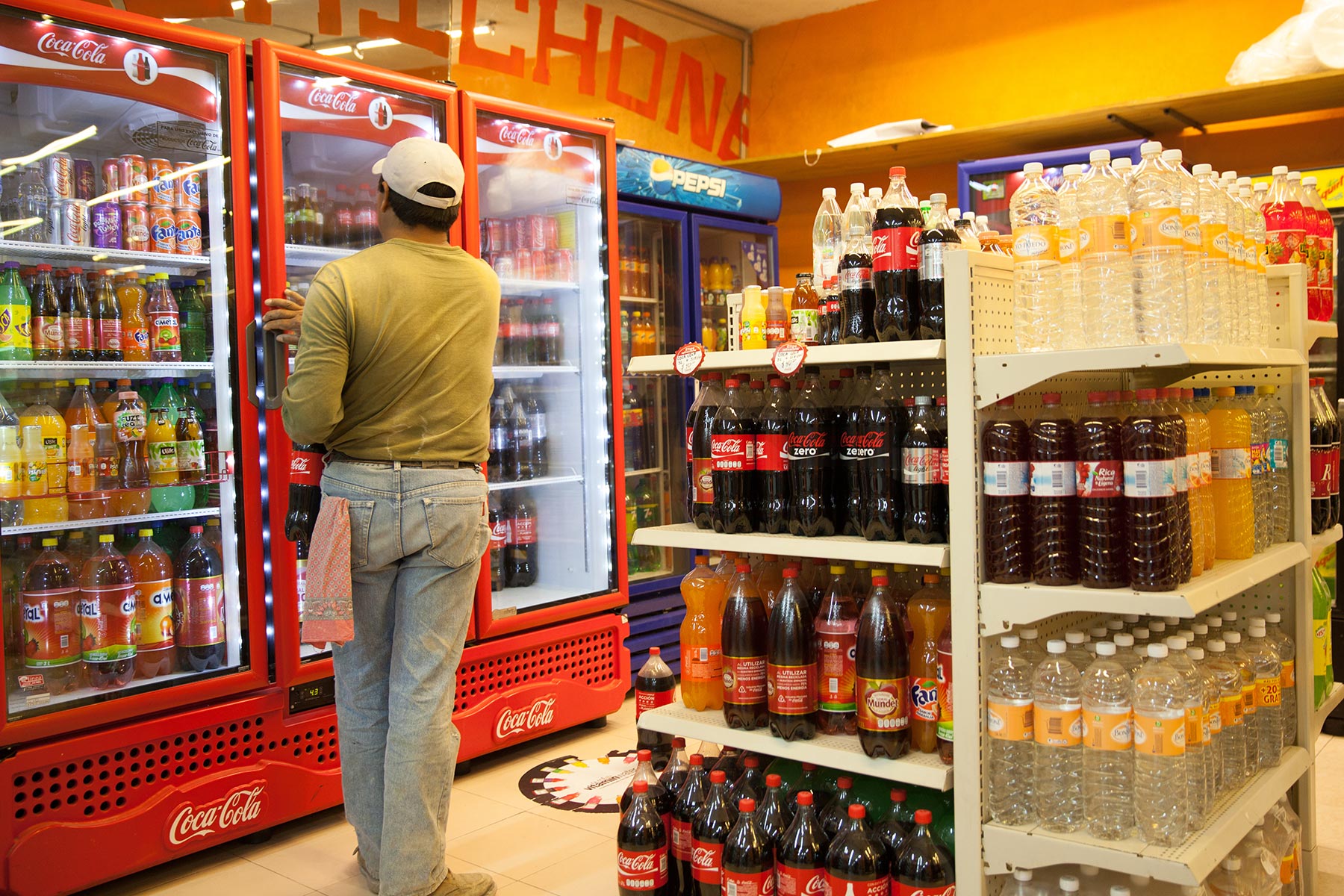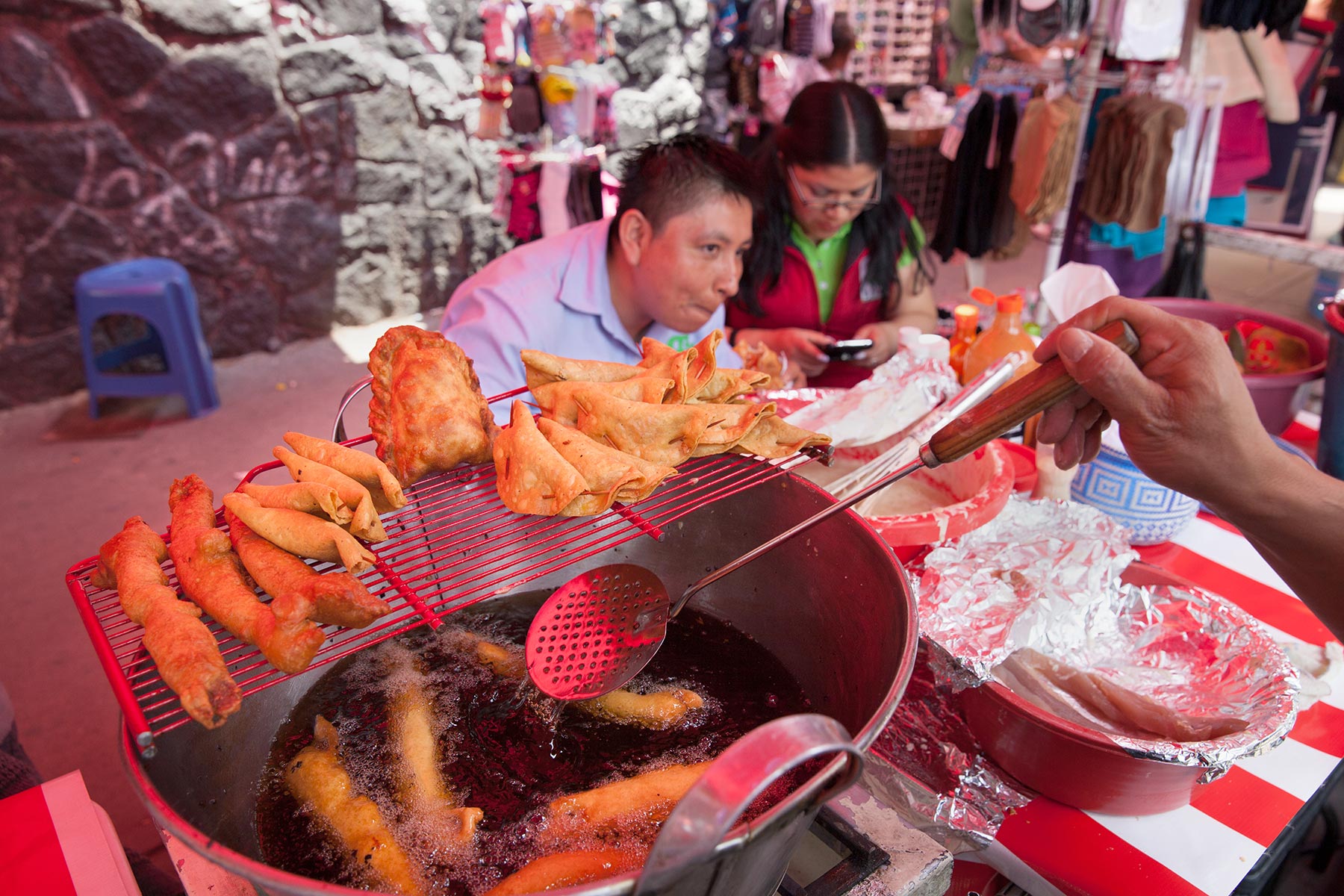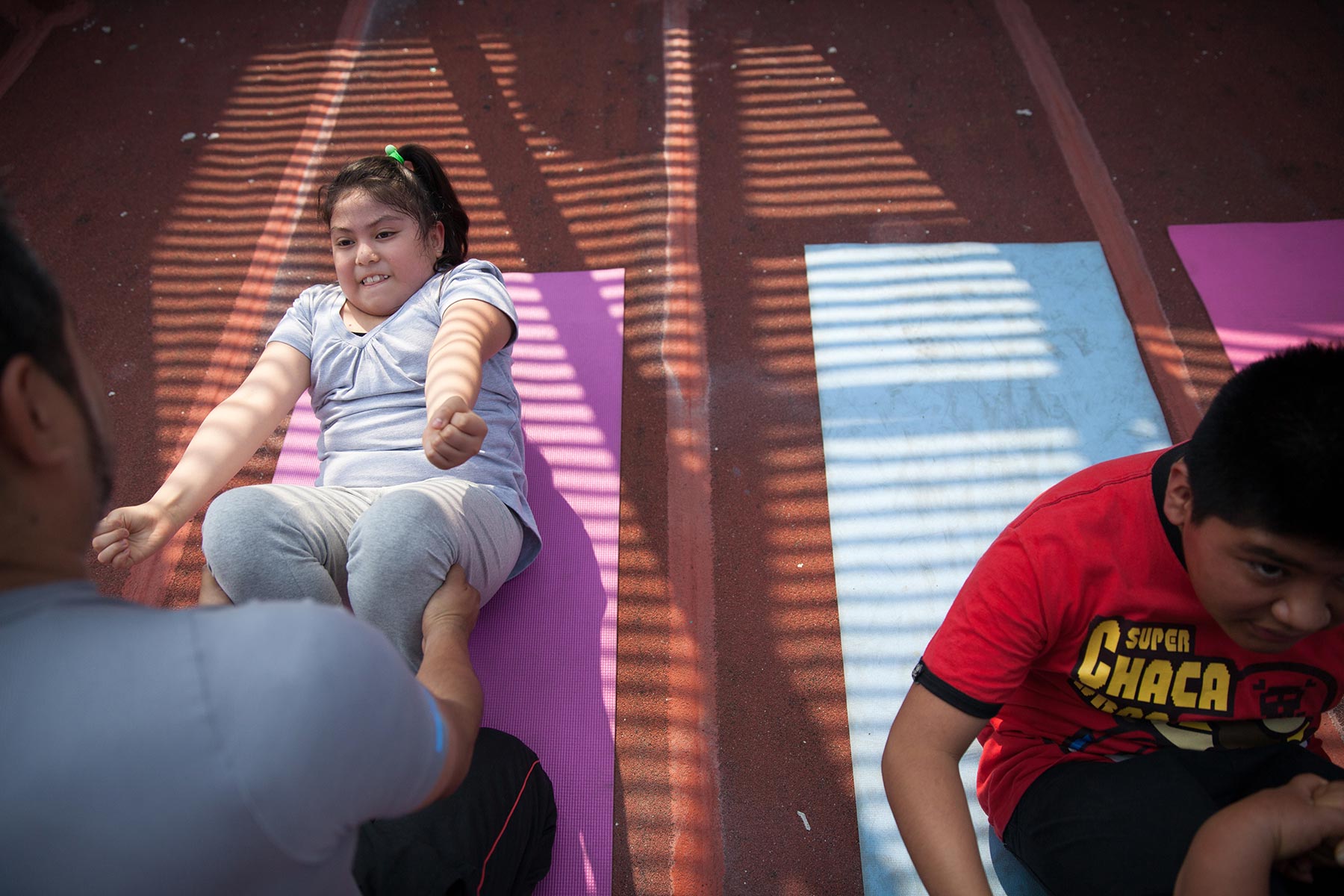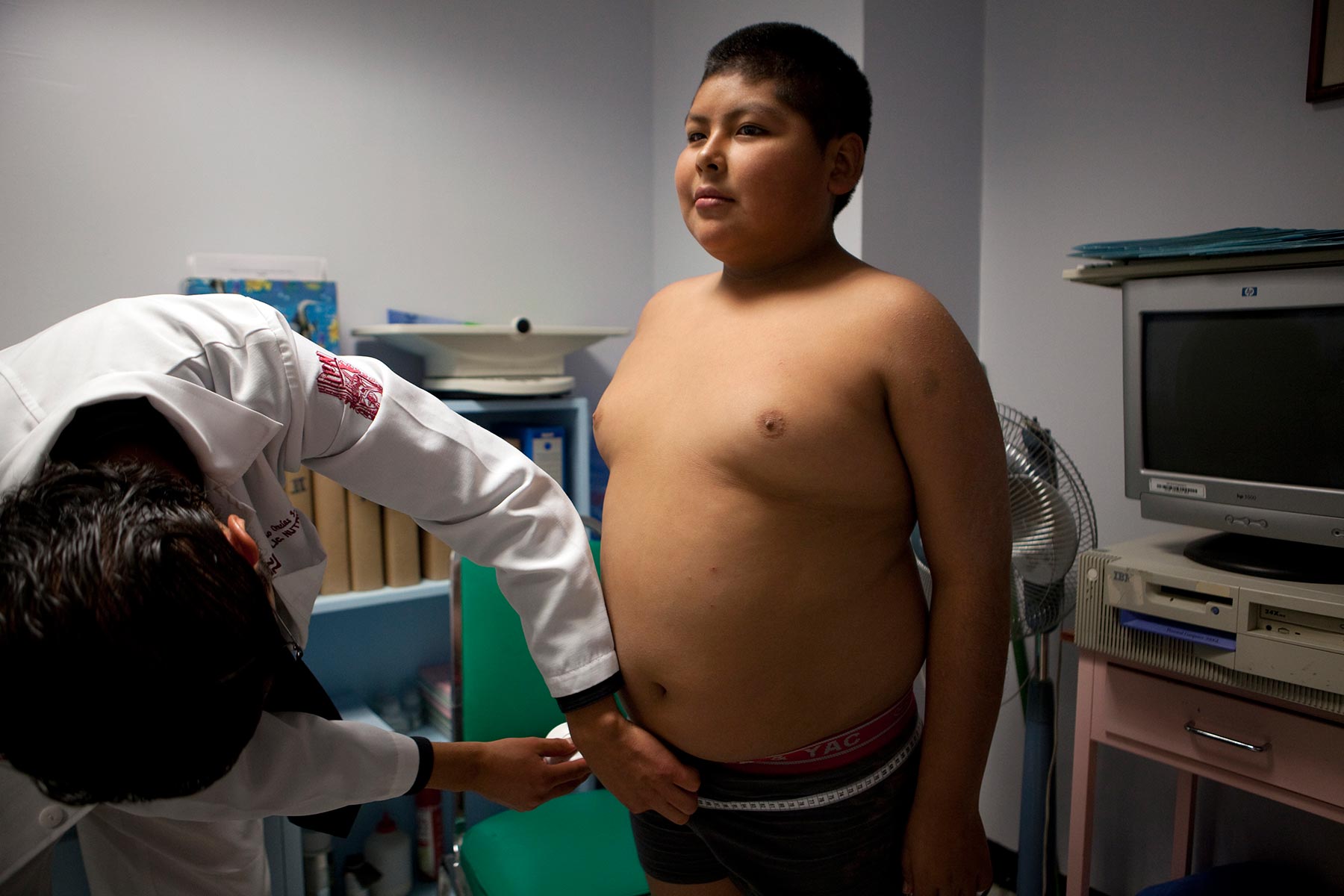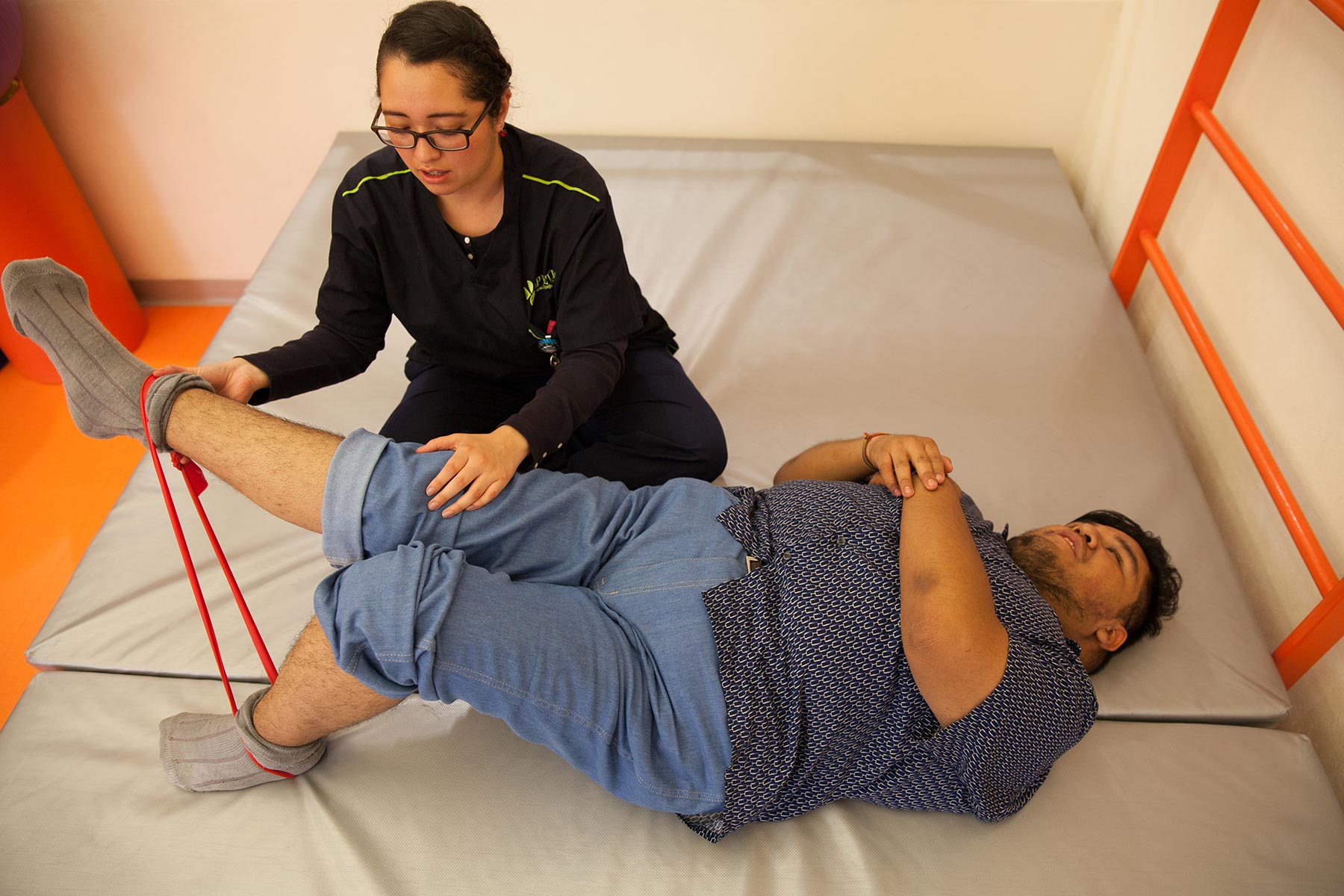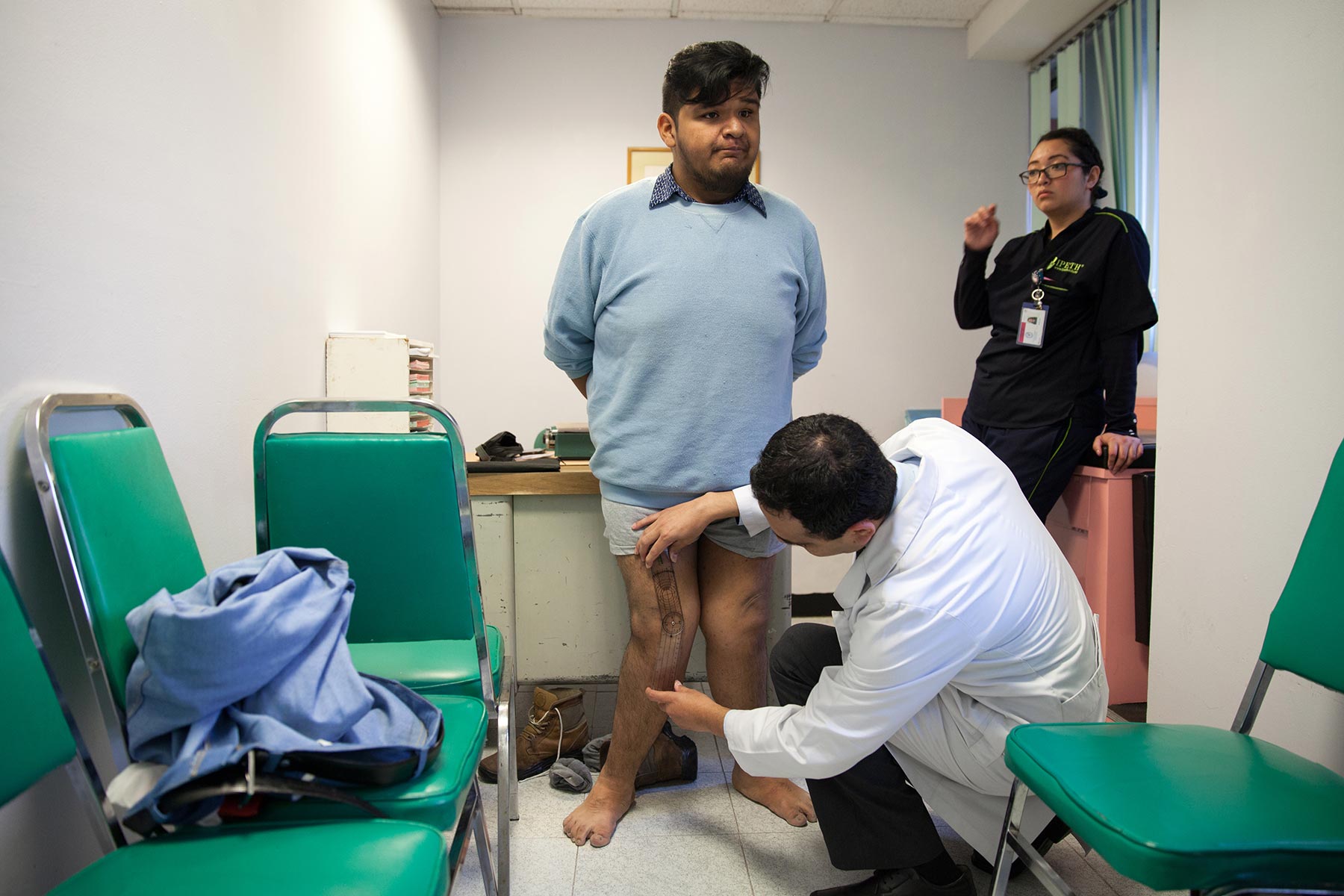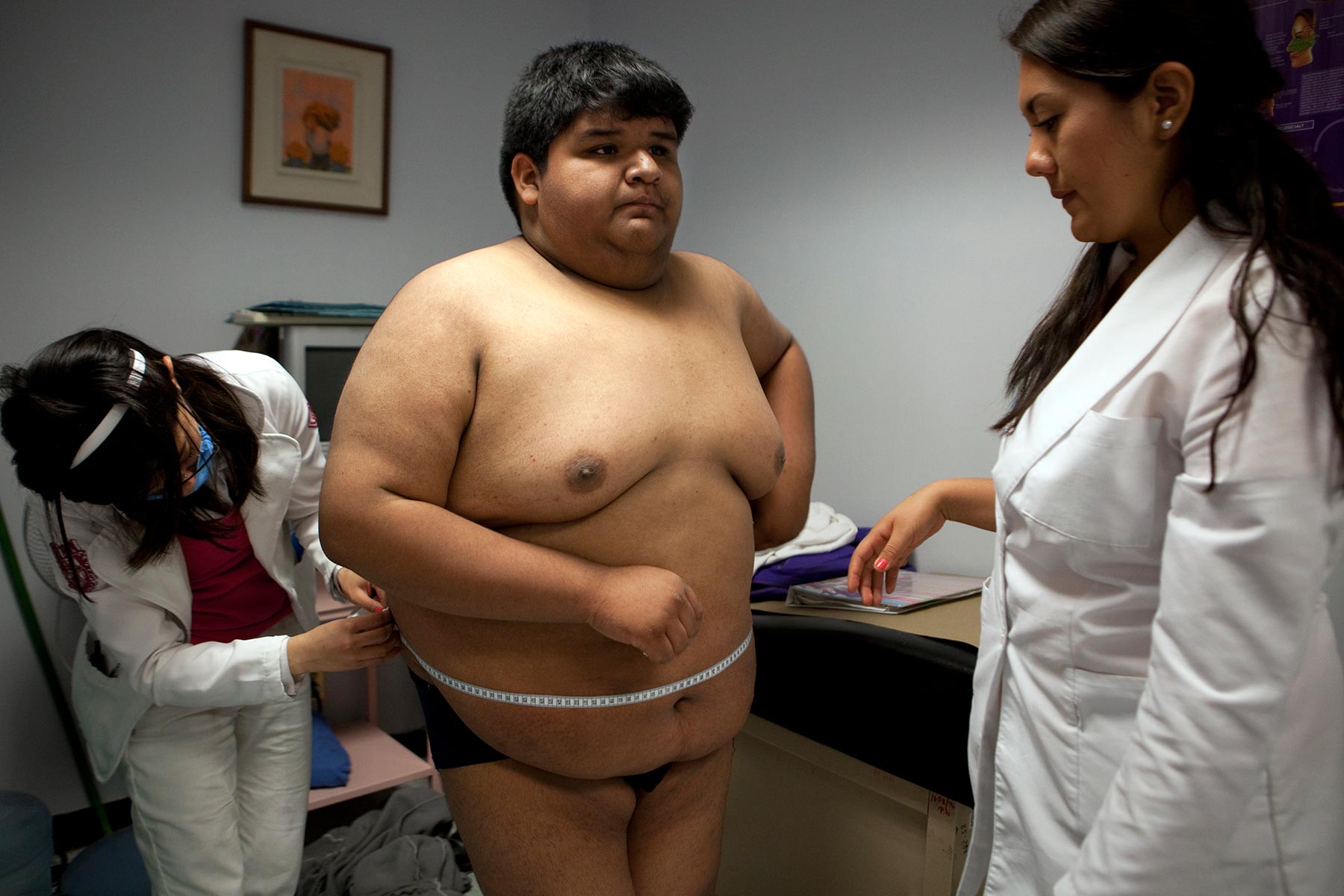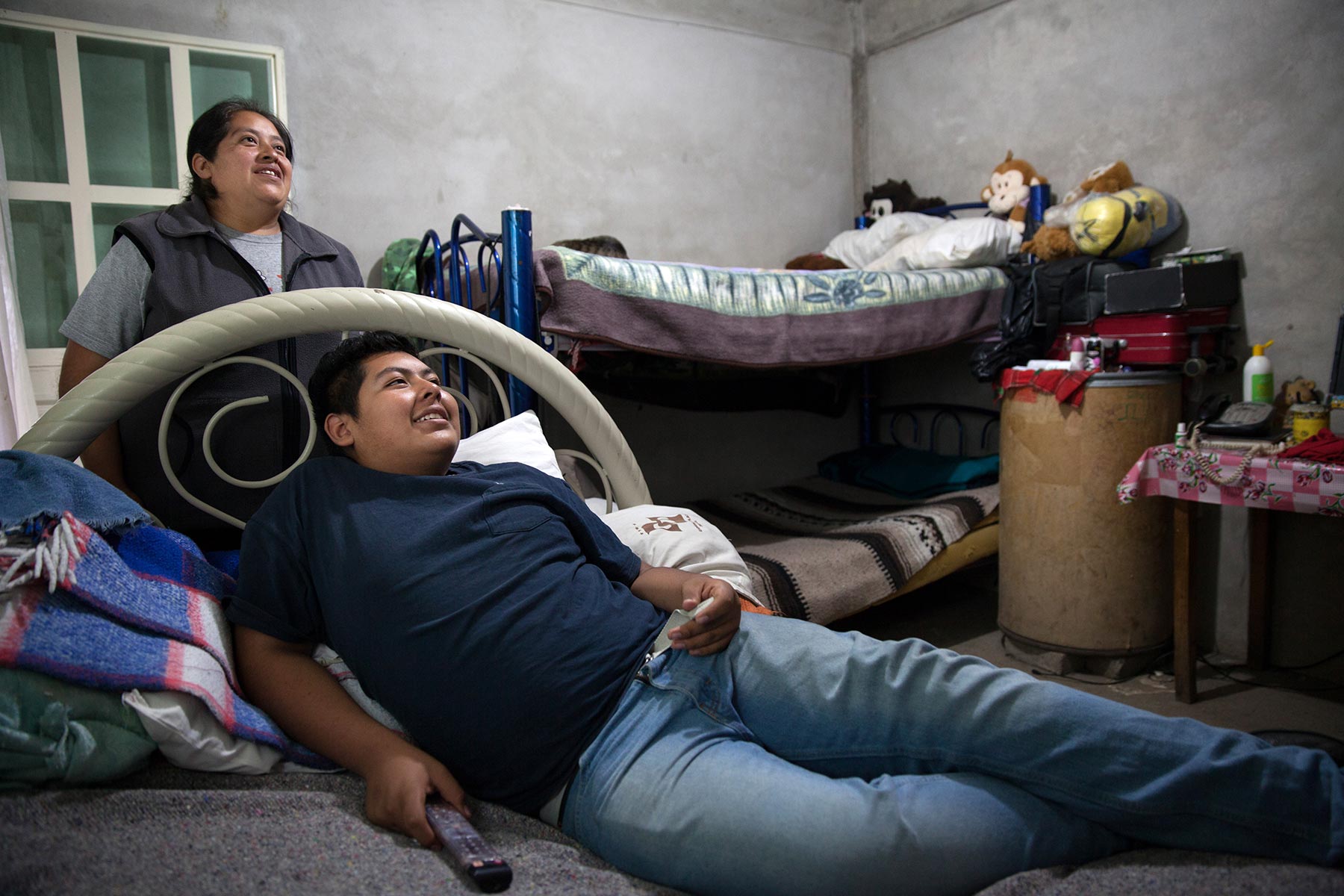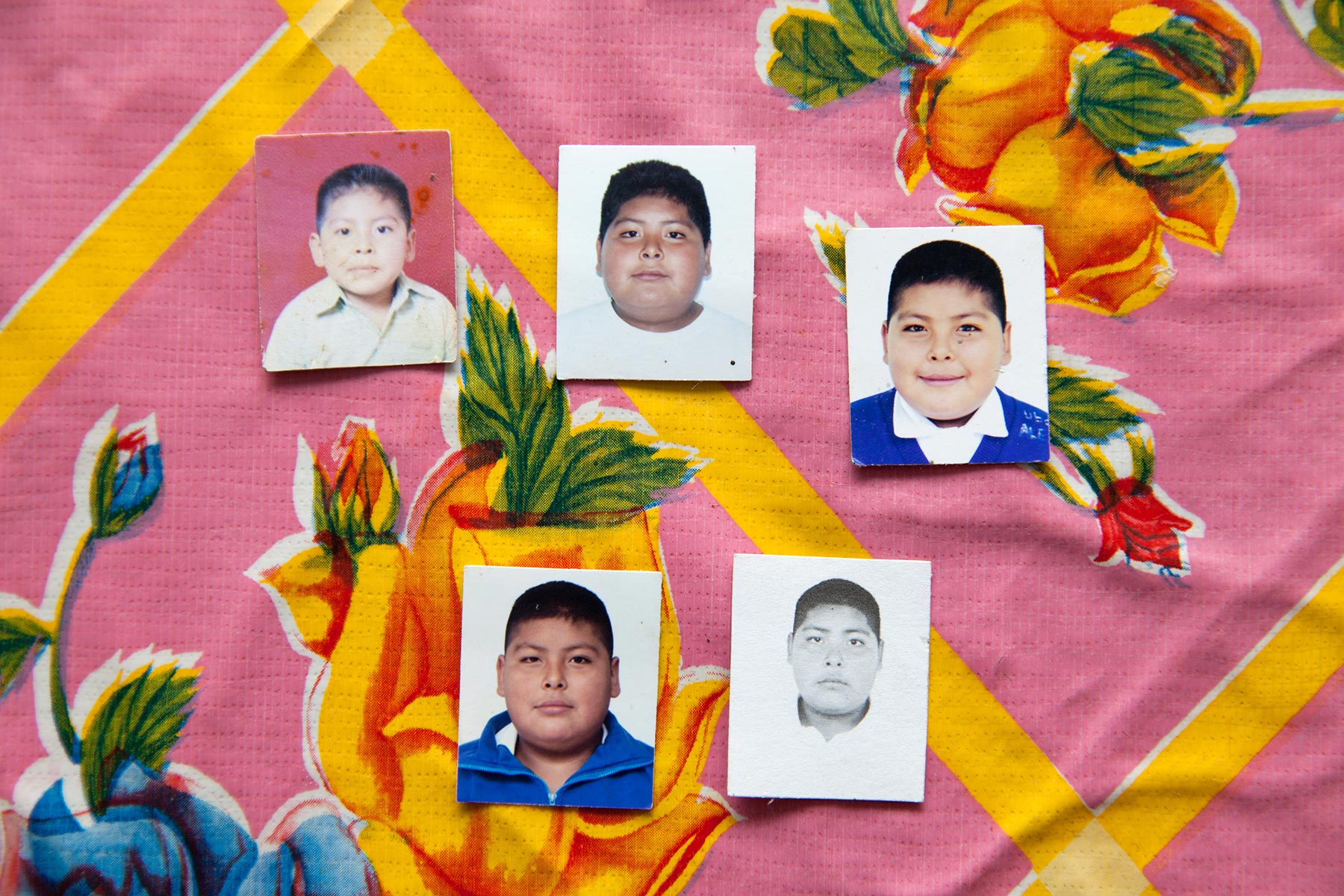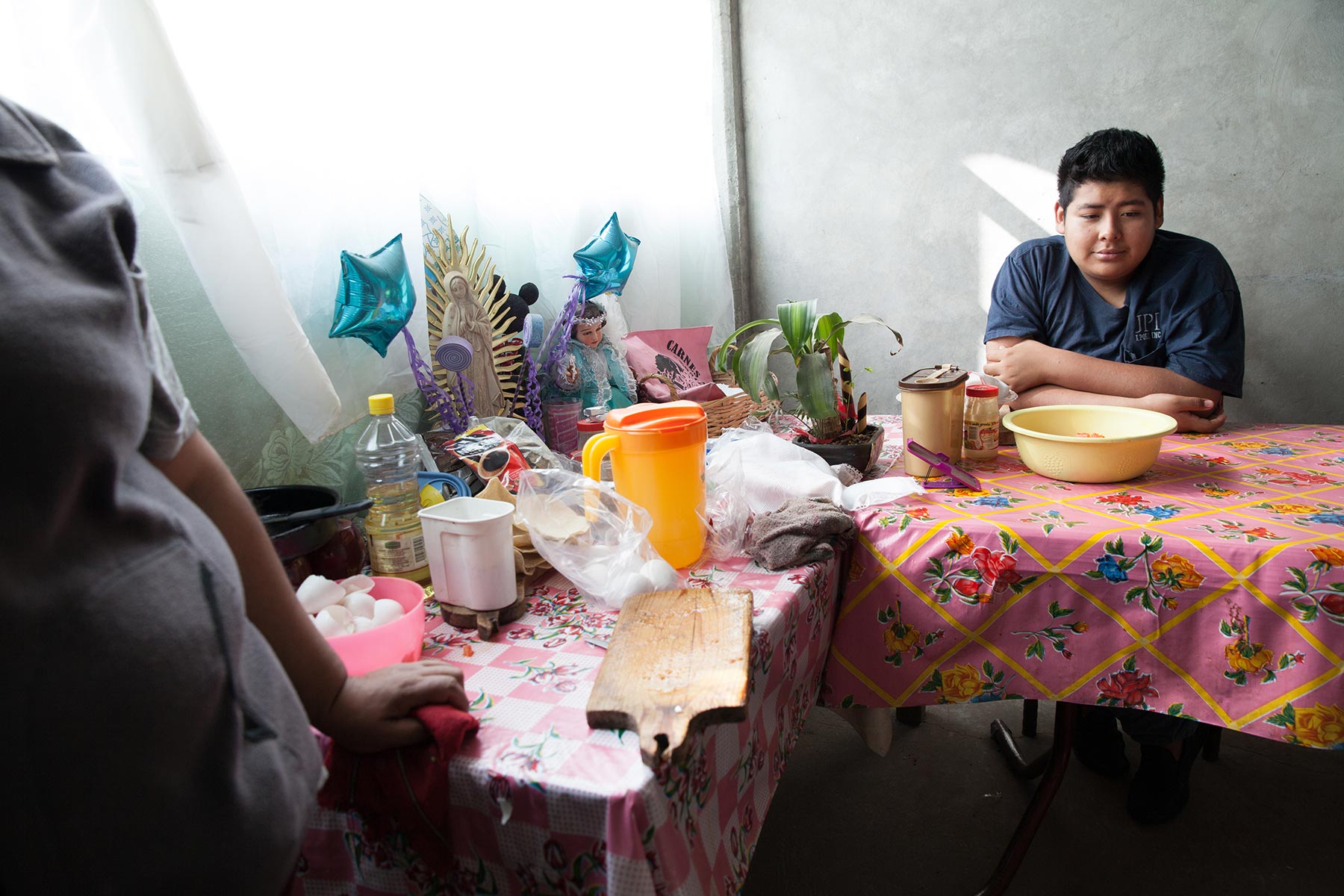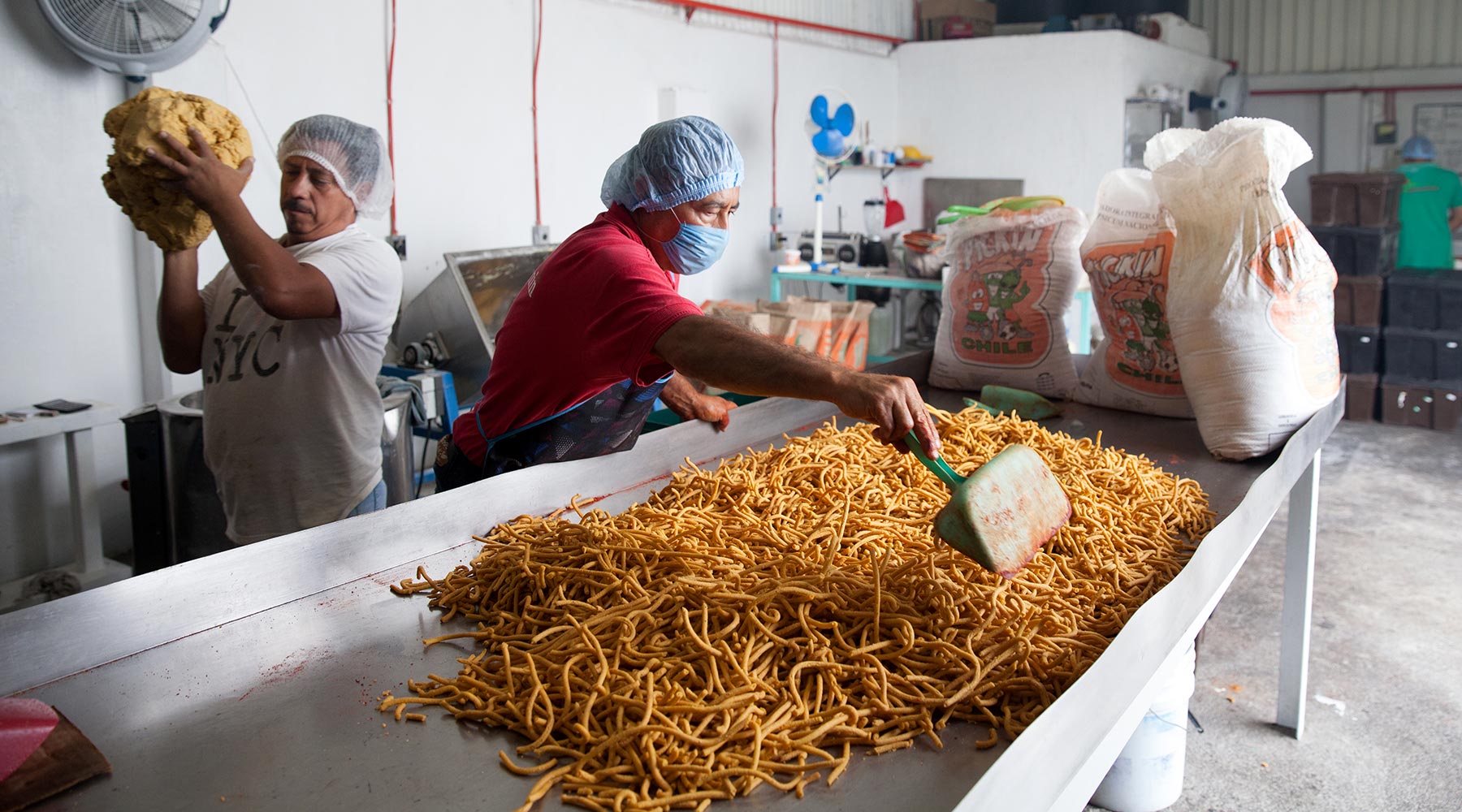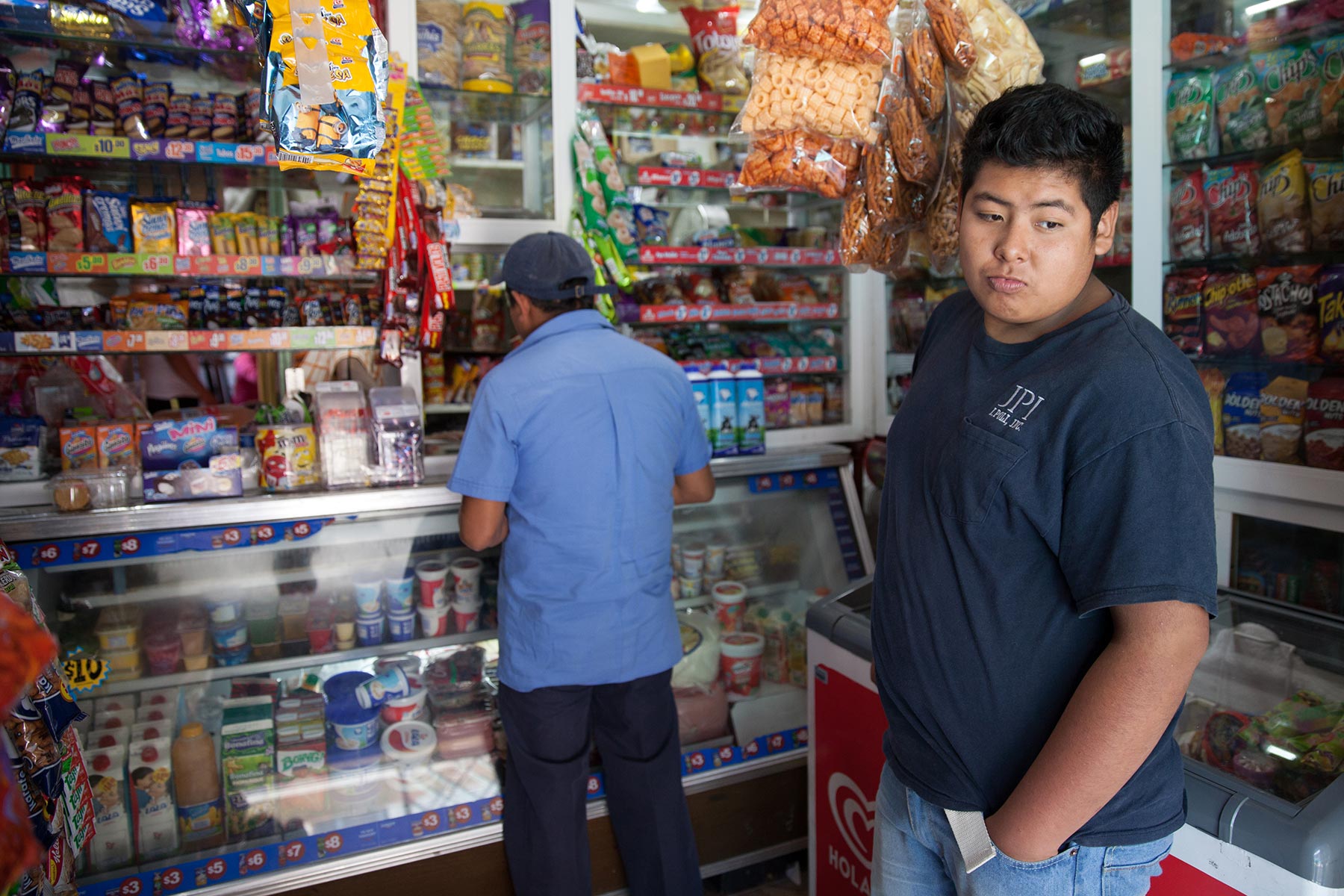
Child obesity in Mexico
US sends its supersized diet to kids south of the border
Series
Part one in a three-part series about obesity in Mexico.
His third-grade teacher was the first to warn Yolanda Garcia there was something wrong with her 10-year-old son, Ubaldo. He was sleeping all the time. He would doze for hours, wake up when the recess bell rang and fall back asleep, oblivious to his classmates’ taunts.
“Yeah, I’d heard the word [obesity], but I didn’t think it was something that bad,” Garcia said, sitting in the kitchen of her dirt-floor home in Iztapalapa, a sprawling, crowded and notoriously poor neighborhood of Mexico City.
Like many a doting mother in Mexico, she didn’t realize her son’s weight was a problem. Ubaldo stood 4 foot 9 and weighed 169 pounds, with a body mass index of 36.5 — nearly 7 points over the threshold for obesity. But to her, being gordito (a little fat, as it’s affectionately called) was better than being too thin. When Ubaldo was 5 or 6, she said, he was skinny. She constantly told him, “Eat, eat!” But around the age of 8, she remembers, he started putting on weight and didn’t stop.
By 10, Ubaldo wasn’t just overweight; he was morbidly obese. He also suffered from sleep apnea, in which breathing stops during sleep. He had two precursors to a diagnosis of diabetes, folds of skin that thickened and darkened (known as acanthosis nigricans) and metabolic syndrome, a constellation of conditions including high blood pressure, abnormal cholesterol levels and excess body fat around the waist.
When doctors saw him on May 20, 2011, Ubaldo wouldn’t stay awake, and his skin was turning blue.
“That child is dying,” Garcia remembered one of them said.
In addition to the $50 billion a year in goods the U.S. exports to Mexico, America has shipped its supersized diet of cheap, processed foods south of the border. According to reports from the Food and Agriculture Organization of the U.N. and the Organization for Economic Co-operation and Development (OECD), Mexico has one of the highest obesity rates in the world. Diabetes, for which obesity is a contributing factor, is now the No. 1 cause of death in the country.
And the problem starts early. According to its secretary of health, Mexico leads the world in childhood obesity: 35 percent of its adolescents are overweight or obese, rising to almost 39 percent in the capital, according to data from its 2012 national nutrition survey.
A 2010–11 census of weight and height of public elementary school students ages 6 to 12 in Mexico City found that 43 percent of boys and 37 percent of girls were overweight or obese.
Some of the obesity risk factors in Mexico are common globally, including poor education regarding diet and nutrition, confusing product labeling and increasing portion sizes. Then there’s the worldwide proliferation of low-cost processed foods. Poor access to potable water doesn’t help, along with urbanization and the decline of traditional diets and societal trends toward more sedentary jobs.
But others are more specific to Mexico.
Take the nearly 2,000-mile border with the U.S. and the friendly trade relations, which makes it easy to pump junk food, known locally as comida chatarra, into a market that’s lucrative for the likes of Coca-Cola, Kellogg, Nestlé and PepsiCo. After Mexico, the U.S. and Canada signed the North American Free Trade Agreement in 1994, foreign investment in Mexican food processing ballooned, with processed food sales growing 5 to 10 percent per year from 1995 to 2003.
Mexico has become the No. 1 per capita consumer of soda, with the average person drinking more than 46 gallons per year — 86 percent more than the average American. Some medical studies suggest a genetic predisposition to obesity, particularly among indigenous people of the south. And while kids around the globe are increasingly glued to e-screens, the tense public security situation further restricts outdoor activity for many Mexican children.
According to the most recent national survey of health and nutrition, the prevalence of overweight or obese adolescents (ages 11 to 19) in Mexico rose from 33.2 percent in 2006 to 34.9 percent in 2012. While the rate of increase is slowing some, and there has been a "notable” decrease over the past two decades in how quickly children become obese, the report notes that the obesity numbers are “far from acceptable.”
Dr. Salvador Villalpando, the head of gastroenterology and nutrition and the obesity clinic for children and adolescents at the Federico Gómez Children’s Hospital in Mexico City, disputes media claims that Mexico is the top country for childhood obesity, saying the ranking can drop to second or third, depending on the study, the selected age range, the definition of obesity and other factors. (Mexico is sixth among OECD countries.)
“But in any case, it’s not very honorable,” he said. “I guess the big point is our kids are getting very fat very fast between the ages 5 and 11.”
Villalpando’s clinic, started in 2003, treats about 80 children, 35 of them morbidly obese, all of them low income. Patients see nutritionists, physical therapists, endocrinologists, psychologists, psychiatrists, surgeons and exercise coaches.
On a summer morning, four children — two boys and two girls — took part in a workout on the roof of an adjacent building. Clinicians dressed in white lab coats cheered on a round-faced 9-year-old who, halfway through her six-minute jog, had resigned herself to walking, arms swinging at her sides, face somber. “Let’s go, Annie. You can do it! Breathe!” they called out.
The run was followed by a set of squats and sit-ups, as well as exercises to see how high the kids could jump and how close they could get to touching their toes. It was the first of a series of weekly workouts for the group throughout the summer.
Despite its multidisciplinary approach, the clinic is hardly a resounding success.
The kids attend along with a parent for six weeks, and their fitness and diet progress is tracked. They return six months later for a follow-up. After the initial six weeks, Villalpando said, a quarter of the kids typically drop from obese to overweight. But after six months, only 6 percent stay there.
“We have a 94 percent failure. That’s very disappointing,” he said. “When kids are obese, you’re too late.”
Garcia fingered the pages of a booklet provided by the clinic to record Ubaldo’s many appointments — several each month to see allergists, neurologists, psychiatrists, ear, nose and throat doctors and other specialists.
“I didn’t miss a single one,” she said.
A year in, there was progress. With the help of doctors, a more balanced diet and the use of an oxygen machine to treat his breathing difficulties, Ubaldo dropped to 157 pounds and a body mass index of 31.1.
But the last appointment recorded was on Oct. 25, 2013. Around that time, she learned she had uterine cancer, and his treatment was put on hold.
Just one month before Ubaldo’s last appointment, Mexican President Enrique Peña Nieto released his national strategy for prevention and control of overweight, obesity and diabetes.
Obesity and Type 2 diabetes, it stated, “have gradually become the main health problem in the country, not only for the health system of the country but to the quality of life of all Mexicans.”
The Garcia family’s story demonstrates some of the many challenges, particularly for low-income Mexican children and families, in combating obesity and obesity-related diseases. And it’s an enormous challenge for the Mexican health care system, costing the government more than $5 billion per year in treatment and indirect costs, according to the 2013 report “Obesity in Mexico: Recommendations for a State Policy.”
Slideshow:
The children who arrive at the clinics for obese and morbidly obese children at Federico Gómez already have myriad health issues. Some are immediately visible, like acanthosis nigricans and bowed legs, while others require consultations and tests to confirm, such as diabetes, liver problems, skin lesions, metabolic syndrome, hypertension, depression and suicidal tendencies.
According to clinic nutritionist Betzabé Salgado, effective treatment requires a sustained focus not just on diet and health ailments but also on family and cultural dynamics.
“In Mexico, food is love,” she said. She said she often sees parents compensating for violence and other problems at home by feeding their children. As she put it, “I’ll give you food because I love you. I can’t resolve problems.”
She said that while moms constantly tell her their children ask for tacos, a sandwich, milk and so on, it’s more often the case the mother is constantly offering the child food. “¿Que quieres comer, mi vida?” Salgado said, using a popular maternal refrain. “What do you want to eat, my dear?
On a Thursday before the end of the school year, Ubaldo has the day off, which he plans to spend at home, watching cartoons in the bedroom he shares with his mother and older brother.
Like many 14-year-old boys, he is polite but shy, speaking only when asked direct questions, which he answers in as few words as possible.
Garcia does most of the talking for him as she prepares him a bowl of papaya and a plate of scrambled eggs with chopped tomatoes. Above the stove hangs an illustration of Jesus, wearing a crown of thorns and gazing heavenward.
Attached to the kitchen is a room that serves as both living room and makeshift garage. Parked in the front is a giant wooden wheelbarrow that her other son, who is 17 and no longer attends school, uses to help neighbors out with odd jobs. A piece of twine and a nail secure a mirror to a wall. Below it is a bench made of concrete blocks and a wooden plank, and scattered around are items from their morning routines — a razor, a black comb, a white brush and some deodorant.
The boys’ father lives somewhere in New York and works construction, Garcia says. He calls every so often and sends money for the boys, but they haven’t heard from him in two weeks.
Ubaldo still says nothing.
When asked about the emergency room visit four years ago, Ubaldo says he doesn’t remember it. “All day, I slept through it,” he says — the hospital bed, the photos, the doctors, the machines. “I hardly remember anything.”
In fact he remembers very little from that period of his life; he was asleep for much of it. He looks at a photo of him taken that morning in the hospital, wearing only a pair of Homer Simpson boxer shorts, his chubby face squeezed up beneath the black straps of an oxygen mask.
“Mmm,” he mutters, nodding his head and flashing a quick nervous smile before going back to fiddling with a cellphone.
Since that day, his weight has risen and dropped. At his heaviest, he was just over 200 pounds. Yolanda says he’s now down to 190 — 22 pounds more than he weighed at age 10, but he's a foot taller now.
He would like to lose a few more pounds — 5 or 10, he says — but in general, he doesn’t think about it much.
“I’m satisfied [with my weight],” he says, “because before, I was fatter and now I’m not.”
